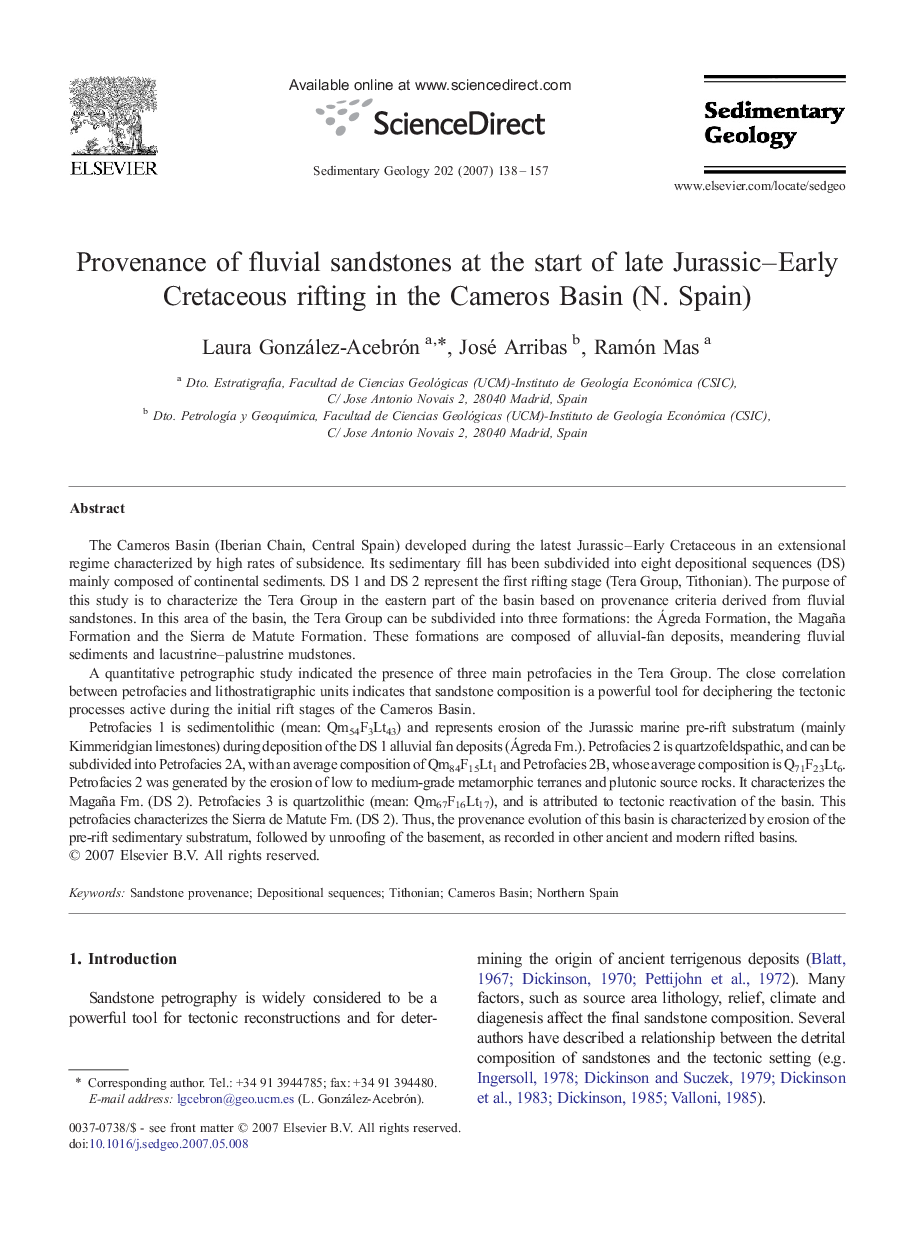| کد مقاله | کد نشریه | سال انتشار | مقاله انگلیسی | نسخه تمام متن |
|---|---|---|---|---|
| 4690627 | 1636162 | 2007 | 20 صفحه PDF | دانلود رایگان |

The Cameros Basin (Iberian Chain, Central Spain) developed during the latest Jurassic–Early Cretaceous in an extensional regime characterized by high rates of subsidence. Its sedimentary fill has been subdivided into eight depositional sequences (DS) mainly composed of continental sediments. DS 1 and DS 2 represent the first rifting stage (Tera Group, Tithonian). The purpose of this study is to characterize the Tera Group in the eastern part of the basin based on provenance criteria derived from fluvial sandstones. In this area of the basin, the Tera Group can be subdivided into three formations: the Ágreda Formation, the Magaña Formation and the Sierra de Matute Formation. These formations are composed of alluvial-fan deposits, meandering fluvial sediments and lacustrine–palustrine mudstones.A quantitative petrographic study indicated the presence of three main petrofacies in the Tera Group. The close correlation between petrofacies and lithostratigraphic units indicates that sandstone composition is a powerful tool for deciphering the tectonic processes active during the initial rift stages of the Cameros Basin.Petrofacies 1 is sedimentolithic (mean: Qm54F3Lt43) and represents erosion of the Jurassic marine pre-rift substratum (mainly Kimmeridgian limestones) during deposition of the DS 1 alluvial fan deposits (Ágreda Fm.). Petrofacies 2 is quartzofeldspathic, and can be subdivided into Petrofacies 2A, with an average composition of Qm84F15Lt1 and Petrofacies 2B, whose average composition is Q71F23Lt6. Petrofacies 2 was generated by the erosion of low to medium-grade metamorphic terranes and plutonic source rocks. It characterizes the Magaña Fm. (DS 2). Petrofacies 3 is quartzolithic (mean: Qm67F16Lt17), and is attributed to tectonic reactivation of the basin. This petrofacies characterizes the Sierra de Matute Fm. (DS 2). Thus, the provenance evolution of this basin is characterized by erosion of the pre-rift sedimentary substratum, followed by unroofing of the basement, as recorded in other ancient and modern rifted basins.
Journal: Sedimentary Geology - Volume 202, Issues 1–2, 15 November 2007, Pages 138–157